
By David Levene (photographs), Imogen Tilden (words)
Fri 7 Jun 2024 01.00 EDT

We visit rehearsals as an extravagant new staging of Lehár’s 1905 operetta comes to Glyndebourne, brought to life by Cal McCrystal and John Wilson with Danielle de Niese in the title role
Cal McCrystal, director
I didn’t think I knew The Merry Widow until I heard the music and then I found myself going, “Oh – I know this! … I love this! … My grandmother hummed this!” This music is in all our bones.
The piece is the prototype for every Hollywood musical you’ve ever seen. Designer Gary McCann has given it the feel of a Hollywood musical – men in top hats, glamour and style, but on an opera stage and set firmly in the belle époque.
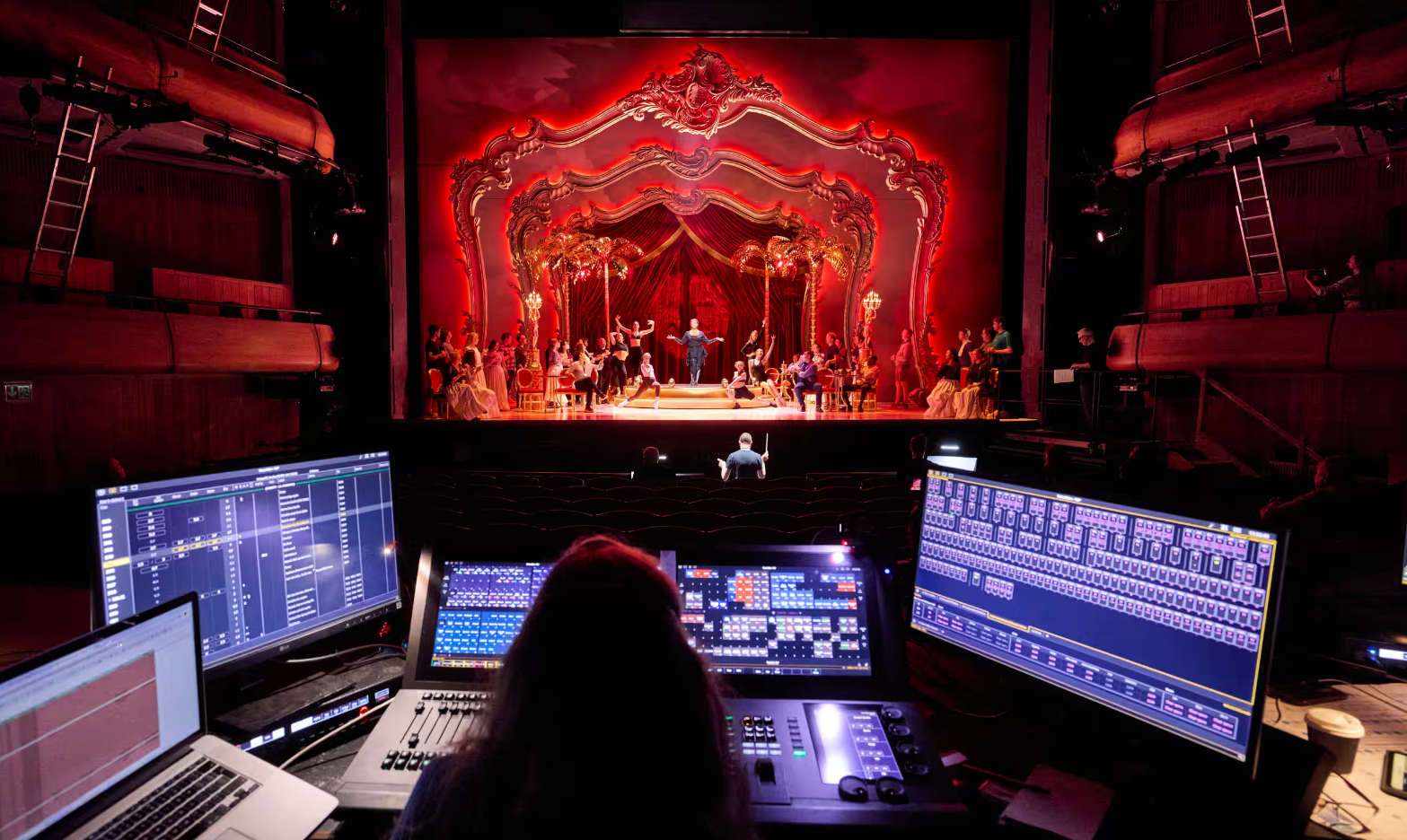
It tells the story of Danilo and Hanna. Years earlier, when he was a young officer and she a peasant girl, they had fallen in love, but his family forbade the marriage. Now, she is a very rich and eligible widow and far above Danilo in status. They meet again in the Pontevedrian embassy in Paris. The Pontevedrian nation needs to stop her marrying a Frenchman because if she takes her money out of the country it goes bankrupt. But Danilo is too proud to propose to her – he’s worried people will think he’s marrying for the wrong reasons. So Hanna tries various tactics to get him to realise how stupid he’s being. Eventually she succeeds.
I’m being very careful to only put the laughs where they’re not ruining the most beautiful harmonies
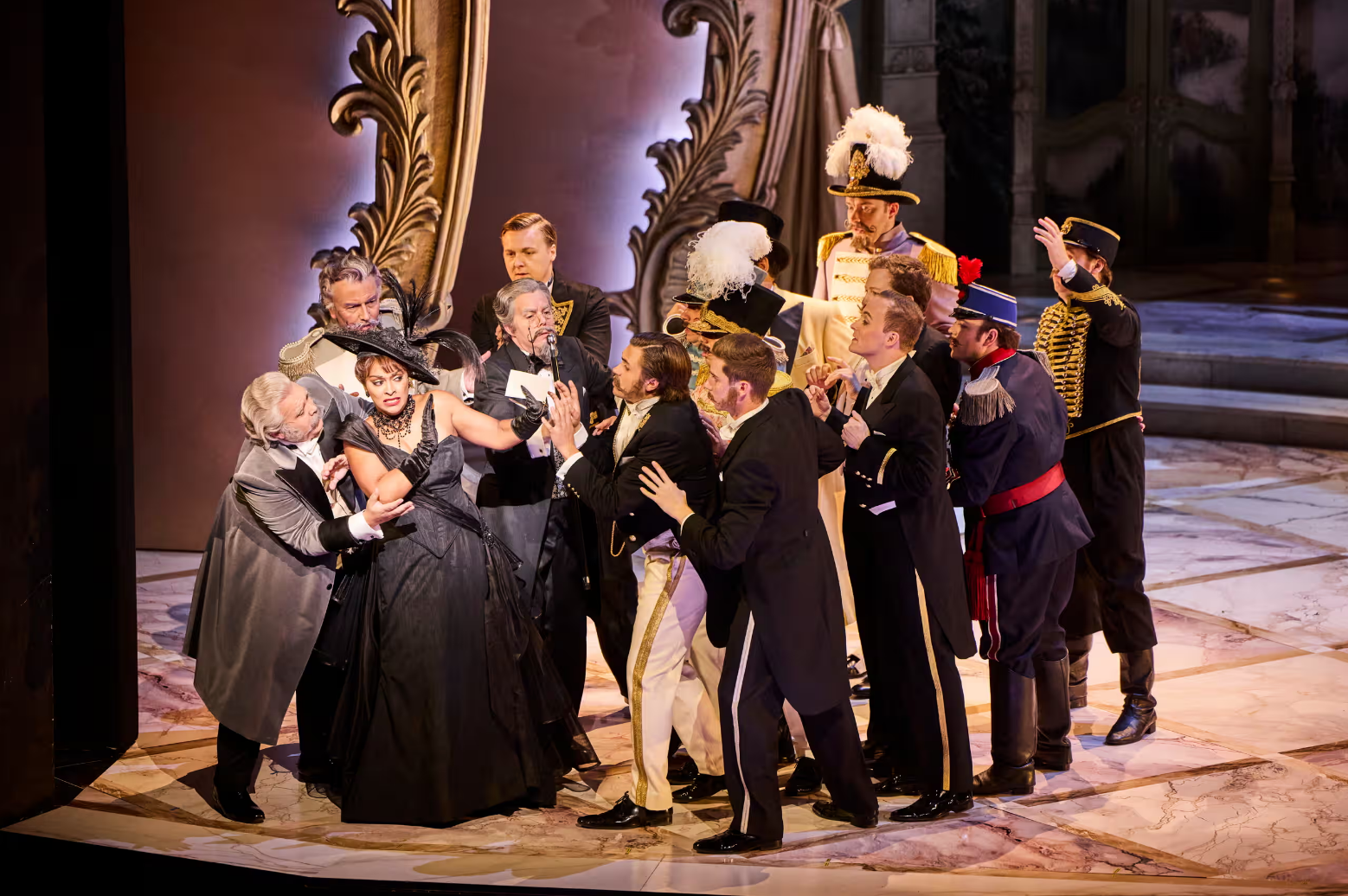
I prefer operetta to opera because there’s dialogue which gives me opportunities to play around much more with the characterisations and have jokes that I wouldn’t be able to do if it were being sung through and everything was dictated by a tempo. The dialogue – and this story is pretty much half and half – leads into the songs beautifully and allows you to set up the mood that you want the audience to have when they hear the song. The language is full of the etiquette of 1905, but there is a little bawdiness in there as well. We’re not trying to make a 1905 comedy, we’re making a 2024 comedy that looks like it’s come from 1905, and I’ve done a fair amount of small rewrites on the libretto to put more jokes in. I’m stealing a few moments during the music too to create some laughs.
One of the reviews for Le Comte Ory, which I did at Garsington Opera in 2021 said that the music was drowned out on occasion by gales of laughter, which of course I was delighted by, the conductor less so. But we can’t stop the show every time people sing as otherwise we’d have two shows – funny dialogue and serious singing – so this has been an ongoing negotiation with [conductor] John Wilson, who I have a huge amount of respect for, and I’m being very careful to only put the laughs where they’re not ruining the most beautiful harmonies.


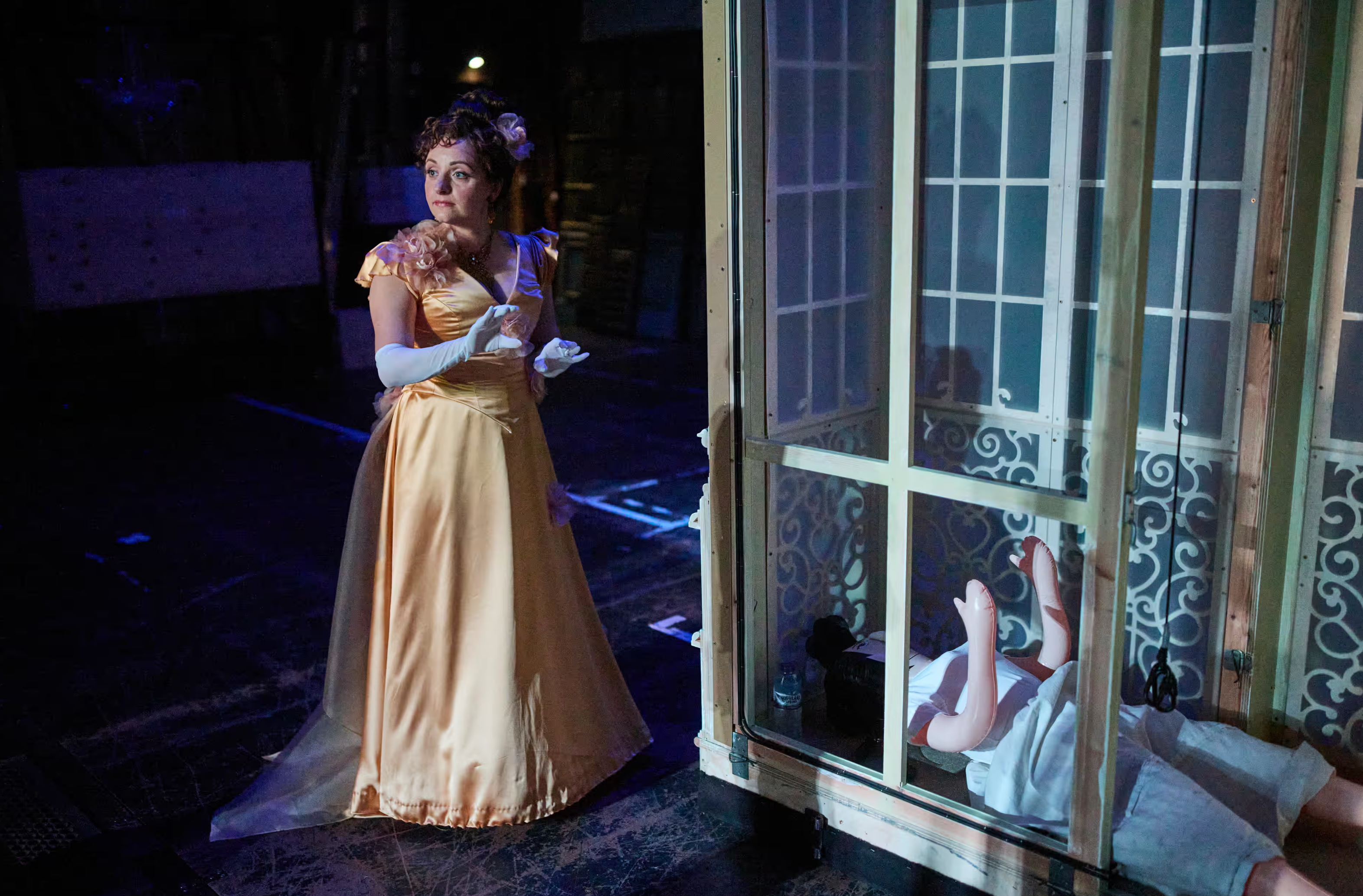
And there are moments where we definitely don’t want there to be a laugh. I want the audience to go, ‘Oh my God, is he never going to ask her to marry him?’ I want moments of pathos because it’s all the more poignant when it breaks through a lighthearted production to give us something that feels so real. I’m sure everyone is laughing at me but I cannot watch the scenes between Hanna and Danilo without crying. So no, this show isn’t just a laugh – it’s a cry as well.
John Wilson, conductor
Operetta is almost extinct today. When I was a kid in the 70s and 80s works such as The Count of Luxembourg and The Desert Song were a central part of the rep of amateur operatic companies; today the genre has almost completely vanished from view. Why? I think because one of the mainstays of operetta is charm, and charm doesn’t have much currency nowadays.
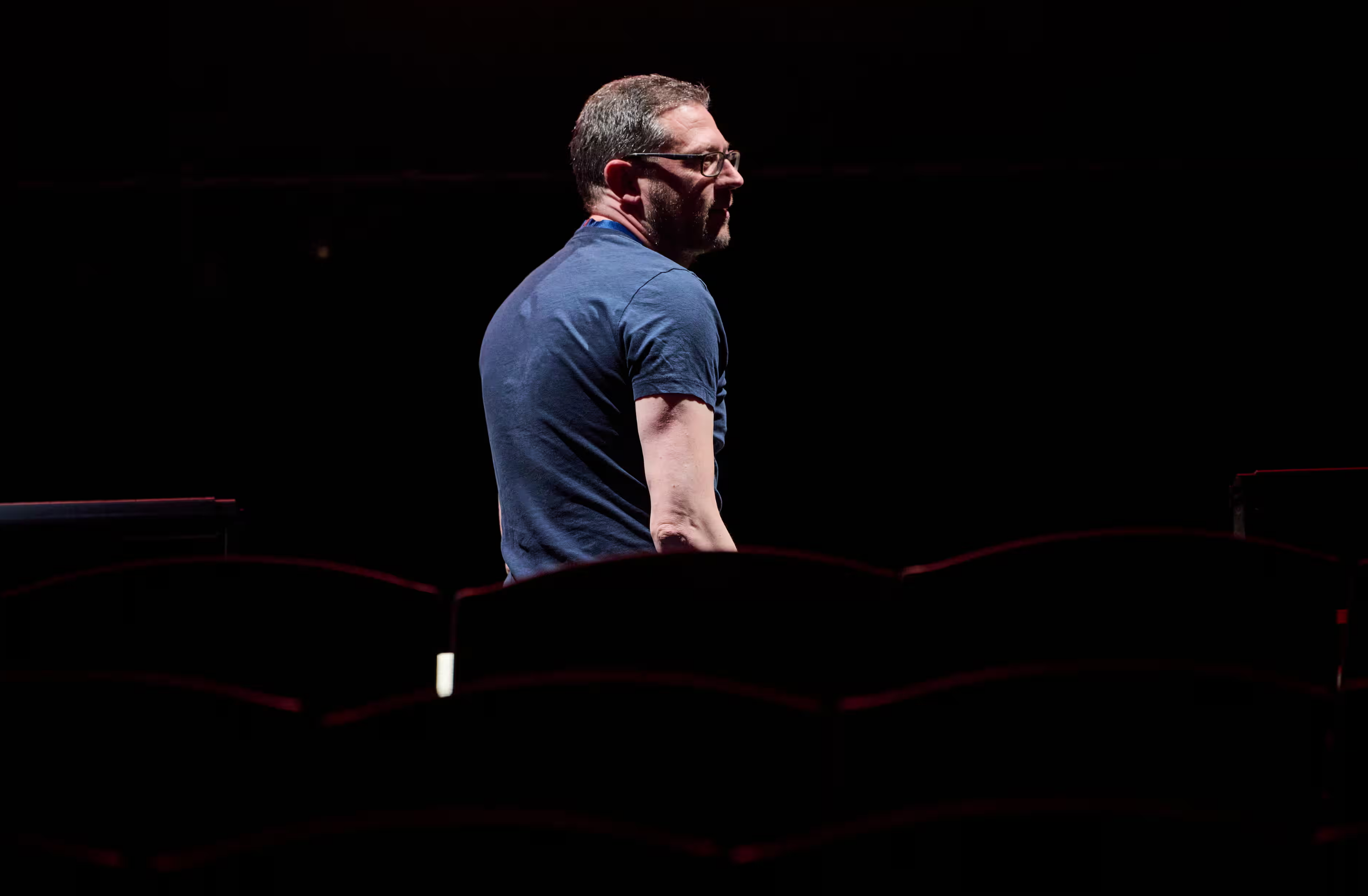
I love The Merry Widow. I’ve done it before and not only has my affection for it never wavered but, as we rehearse it, each day I love it more and more. There’s a special way to handle it – comic opera is a serious business. It’s certainly very difficult to sing and you must never condescend to the material. It needs to have operatic voices but also to be kept buoyant and light so that we can make sure the text is clearly delivered.
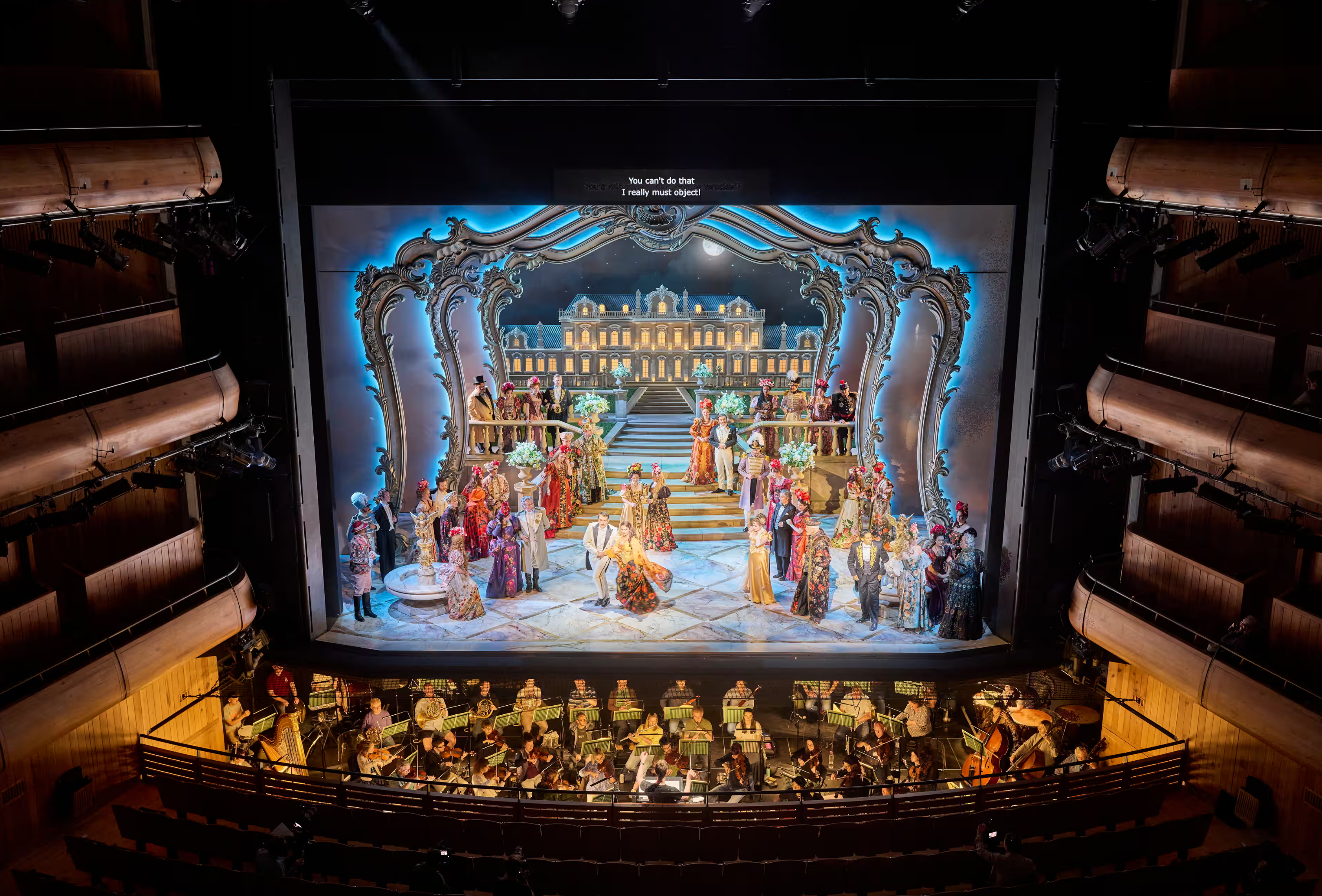
This is a piece for people who have a sweet tooth – it’s like the best and most delicious of French pastries
Franz Lehár took the genre to new heights. He was a master orchestrator – which is why conductors love to get their hands on this piece. You can hear the popular tunes of the day, military marches and ballroom dances in its musical language, but the piquancy of the orchestration is definitely French – the influence of Debussy and Ravel and how they changed how you handle the orchestra is clearly evident.
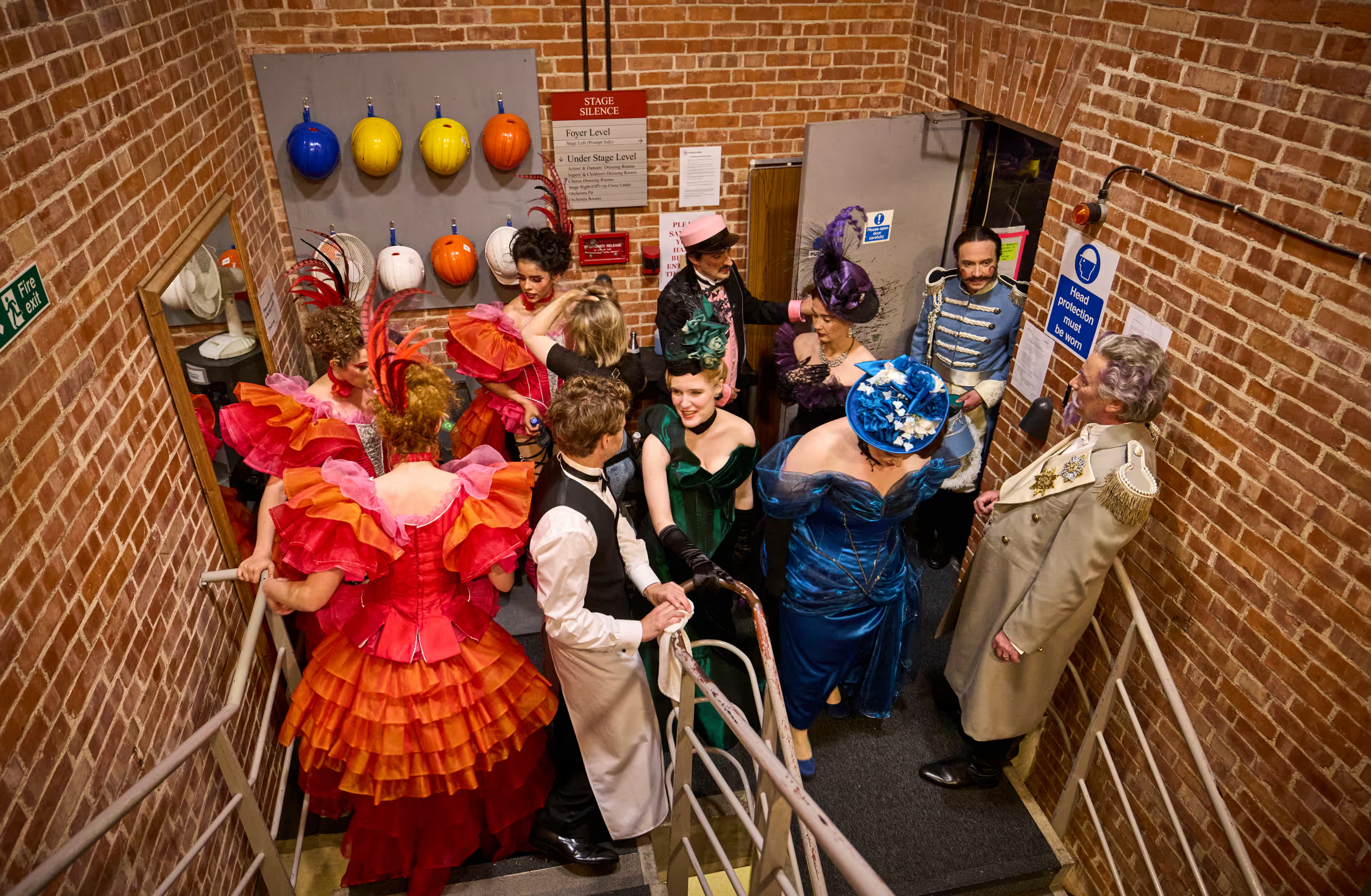

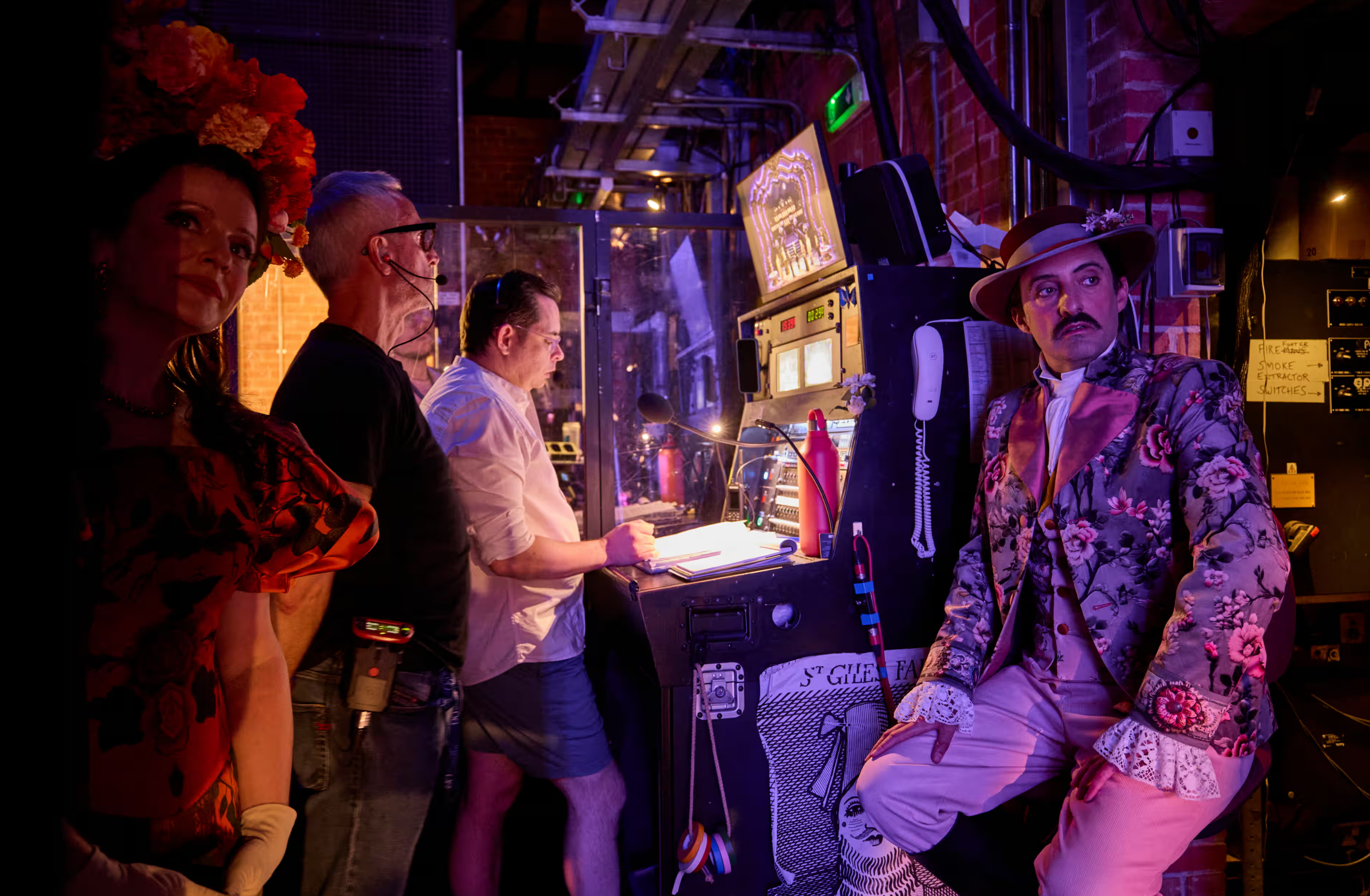
Almost from the very moment of its premiere in Vienna in 1905 it was hugely successful and was performed all over Europe and on Broadway – this was the pop music of the day and it made the composers rich! There’s a direct line to be drawn from The Merry Widow to the Hollywood musical. Composers such as Victor Herbert and Sigmund Romberg were to take Lehár’s success from middle Europe to Broadway, and from that, Jerome Kern built the foundations for the modern American musical.
You have to be an idiot to look down on operetta. I’m not going to pull my punches on that. There’s not a dull moment in this piece – every bar is inspired. My favourite moment? The gorgeous Act II duet between Camille and Valencienne – simply one of the most beautiful things anybody has ever written. And yes, this is a piece for people who have a sweet tooth, it’s like the best and most delicious of French pastries. But what’s wrong with that?
Gary McCann, designer
I like things to look lavish and extravagant – which is very appropriate for this work. Cal and I were particularly drawn to the idea of the great Hollywood musicals of the 1950s, especially since operetta is the precursor of musicals. Busby Berkeley, that fantastic sequence in Gentleman Prefer Blondes when Marilyn Monroe sings Diamonds Are a Girl’s Best Friend, that kind of thing. I also looked at the work of Cecil Beaton and 50s fashion designers; theatre designer Oliver Messel was also a reference. Messel’s designs had a wonderful self-consciously theatricality – decorative proscenium arches and so on, which said to audiences, “We’re making this up. Please don’t take this seriously!”

The set and costumes for this are a visual overload. We’ve pushed it quite far!
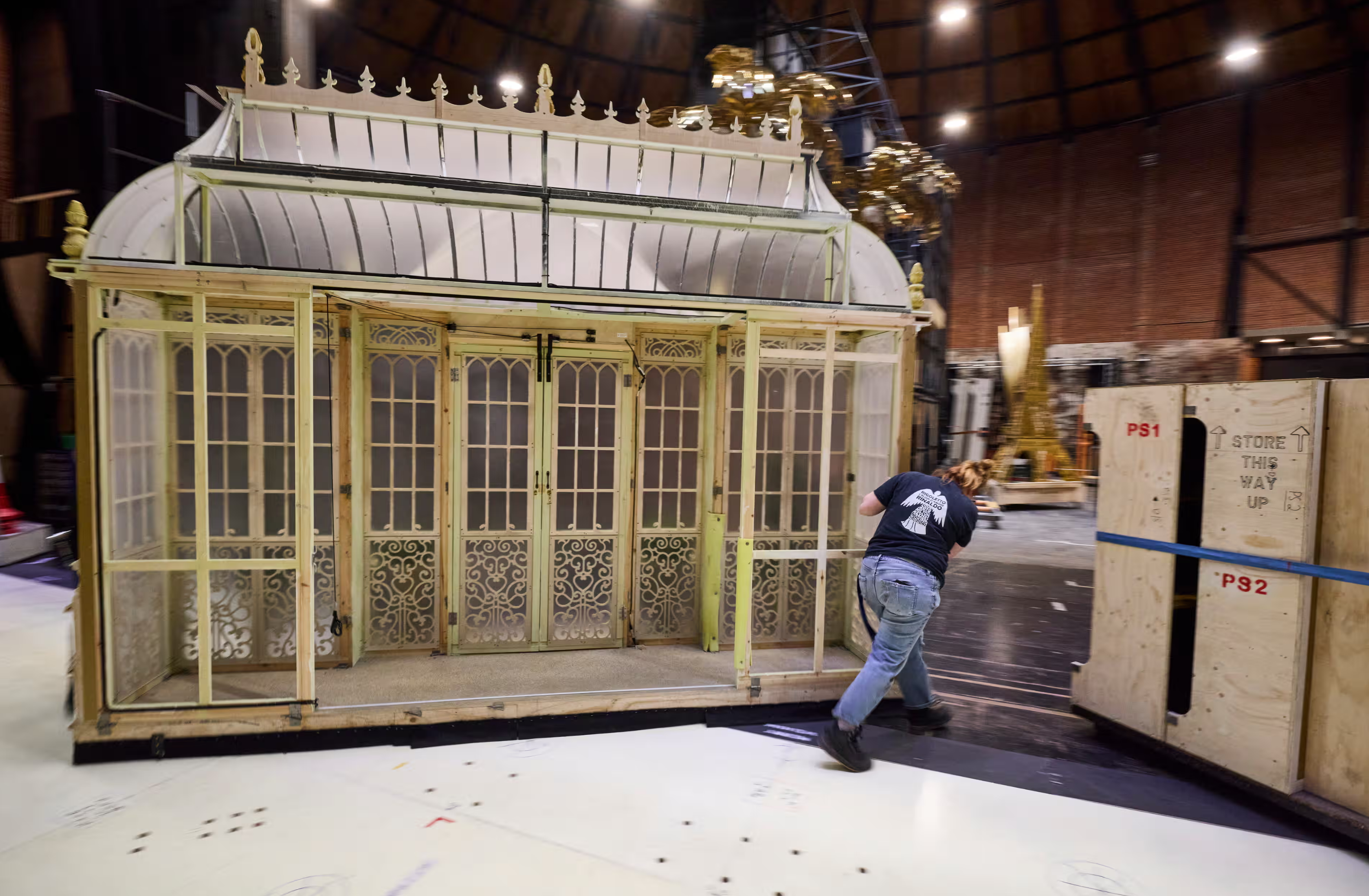
The set and costumes for this are a visual overload. It’s aesthetically attractive, but also tongue-in-cheek. There are gold palm trees with illuminated coconuts, and an Eiffel Tower in the final act (set in Maxim’s nightclub) and pink and orange costumes. We’ve pushed it quite far!
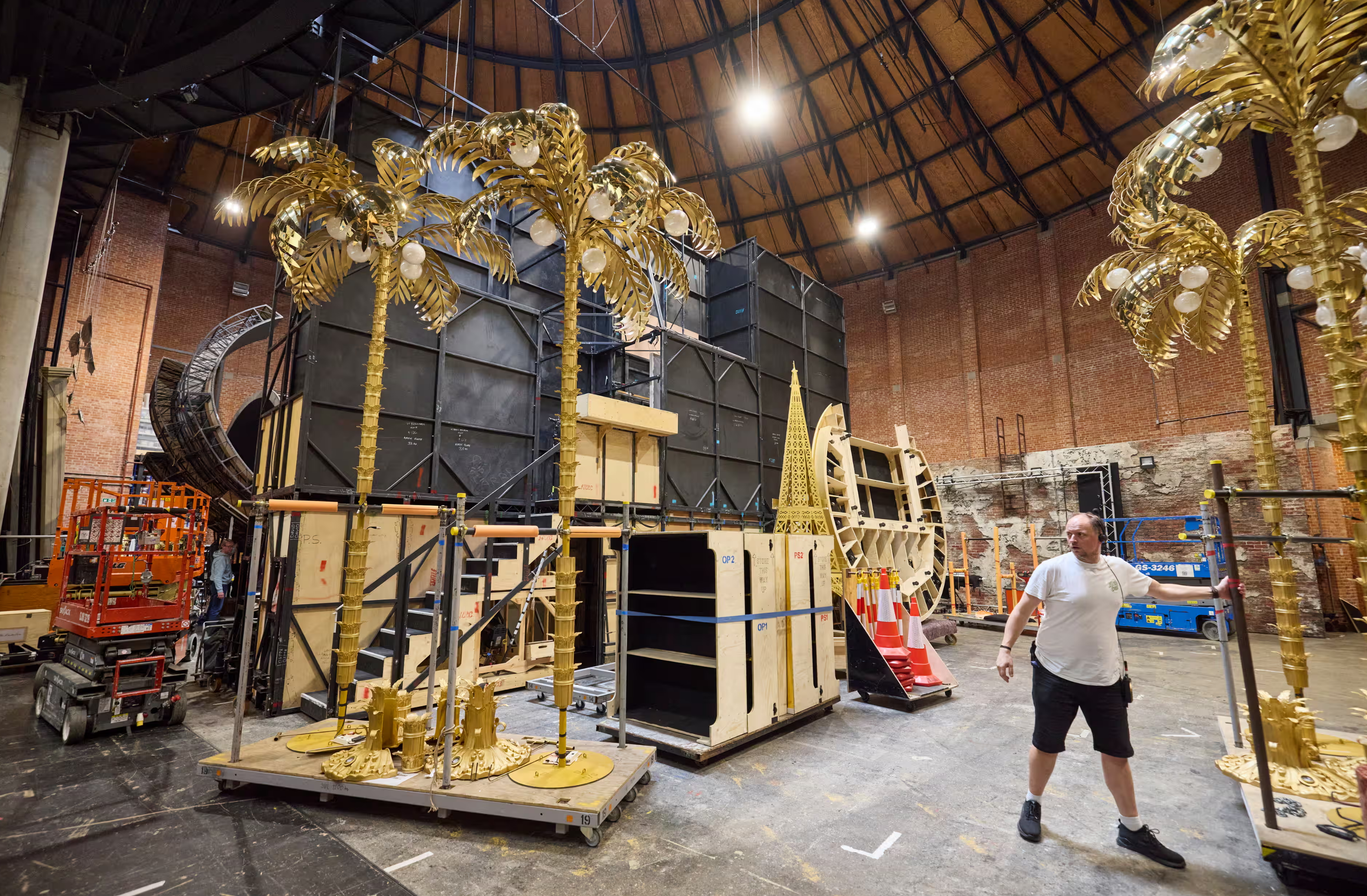

The costumes are belle époque seen through a 50s lens. Each act has a palette. The first is set in a white space with everyone in sherbet-coloured pastel clothes, apart from Hanna who is still in black as this is the final day of wearing mourning. I’ve let loose in Act II for the garden party and designed a set of folk costumes for the women inspired by floral motifs and eastern European embroidery. I used AI to generate about 30 different textiles of wild patterns, which are all bespoke to the performers. The final act is a nod to the Ascot scene in My Fair Lady – extravagant and elaborate costumes, in principally blue, purple, green and black and white stripes.
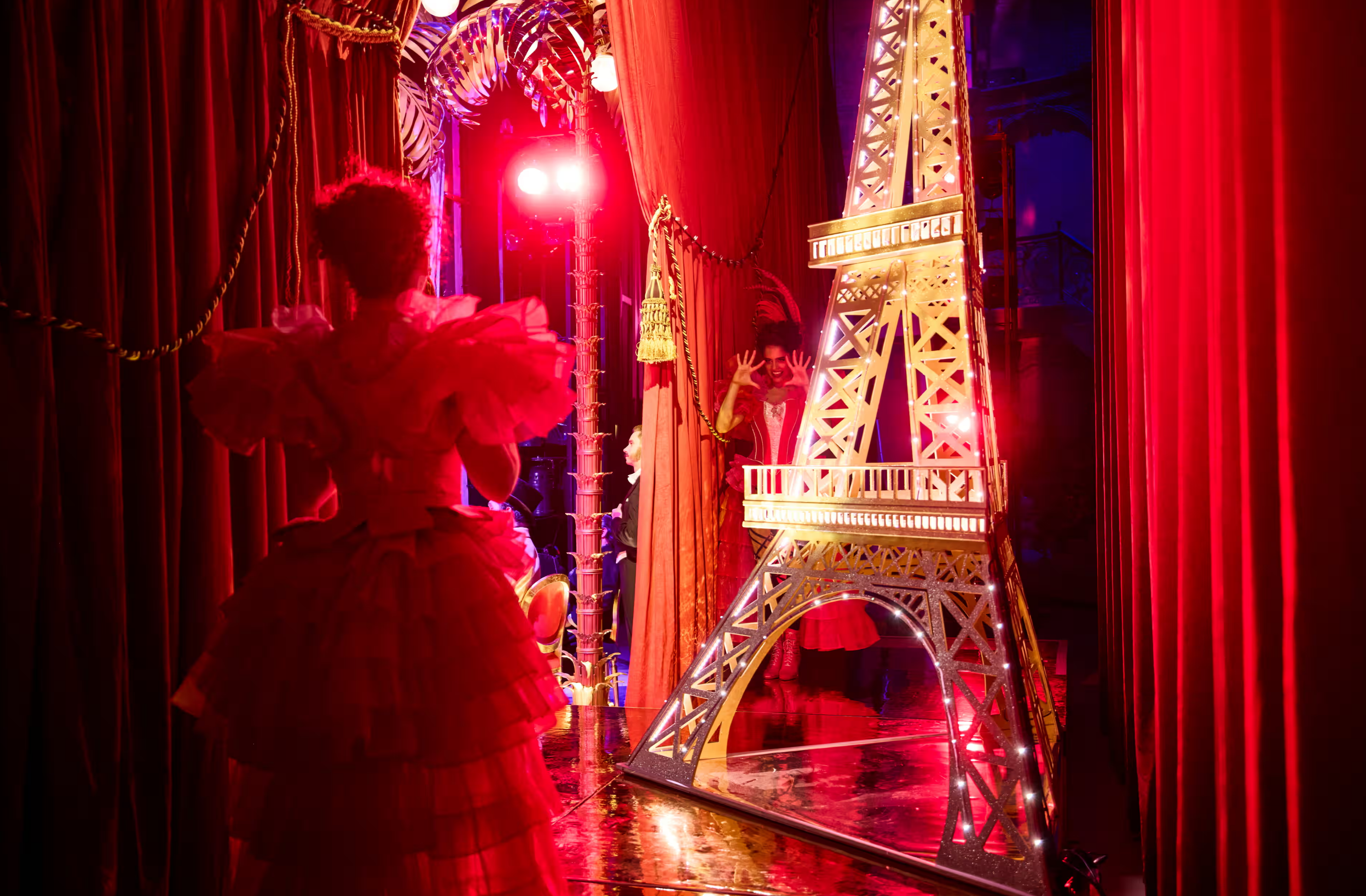

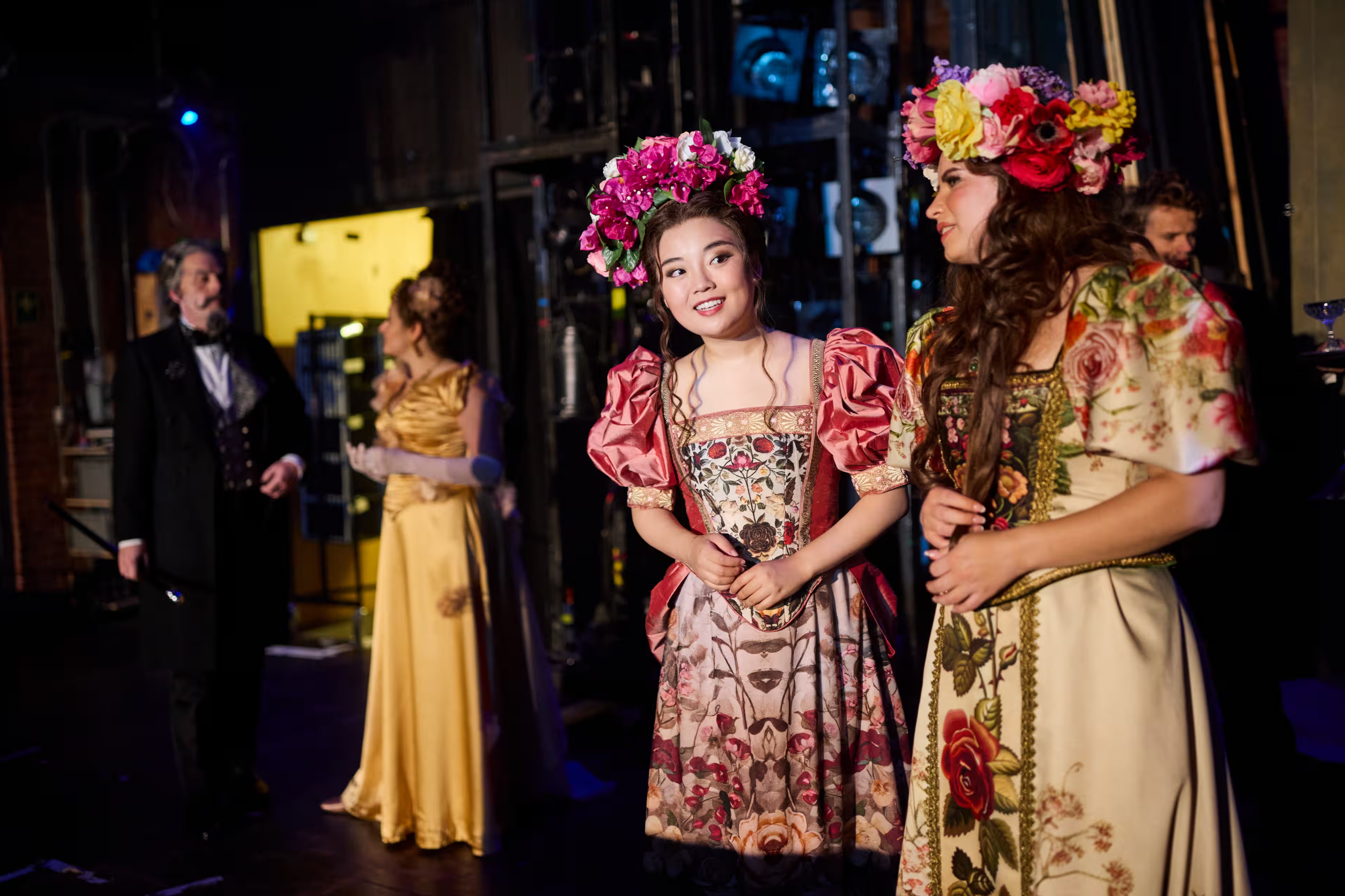
The Merry Widow is a musical feast, both beautiful and old-fashioned, and we have made a visual counterpart for that.
Danielle de Niese (singing the title role of Hanna Glawari)
I’m a huge fan of the work but it needs to be taken seriously and done authentically, not mugged. Operetta looks deceptively easy but it’s very hard to pull off. The music is charming and sparkling but it can also be introspective and touching. There are plenty of laugh-out-loud moments, but it’s never slapstick or stagey, and all the emotions are tethered to something that is utterly real and human.
You get a lot of bang for your buck when you come into The Merry Widow. It’s like five pieces rolled into one
I absolutely love Hanna! She’s a modern woman with agency and financial means – a rare thing in those days. I didn’t know the story well before this and was surprised to find what a beautiful and romantic love story it is. Hanna’s journey is about finding her way back to love, even though that love caused her a lot of pain. And it’s about forgiveness – she needs to forgive Danilo. It’s interesting that her financial circumstances continue to keep her and Danilo apart – first, when she was young, the problem was that she wasn’t rich enough, and now she’s so rich Danilo is too proud to propose.
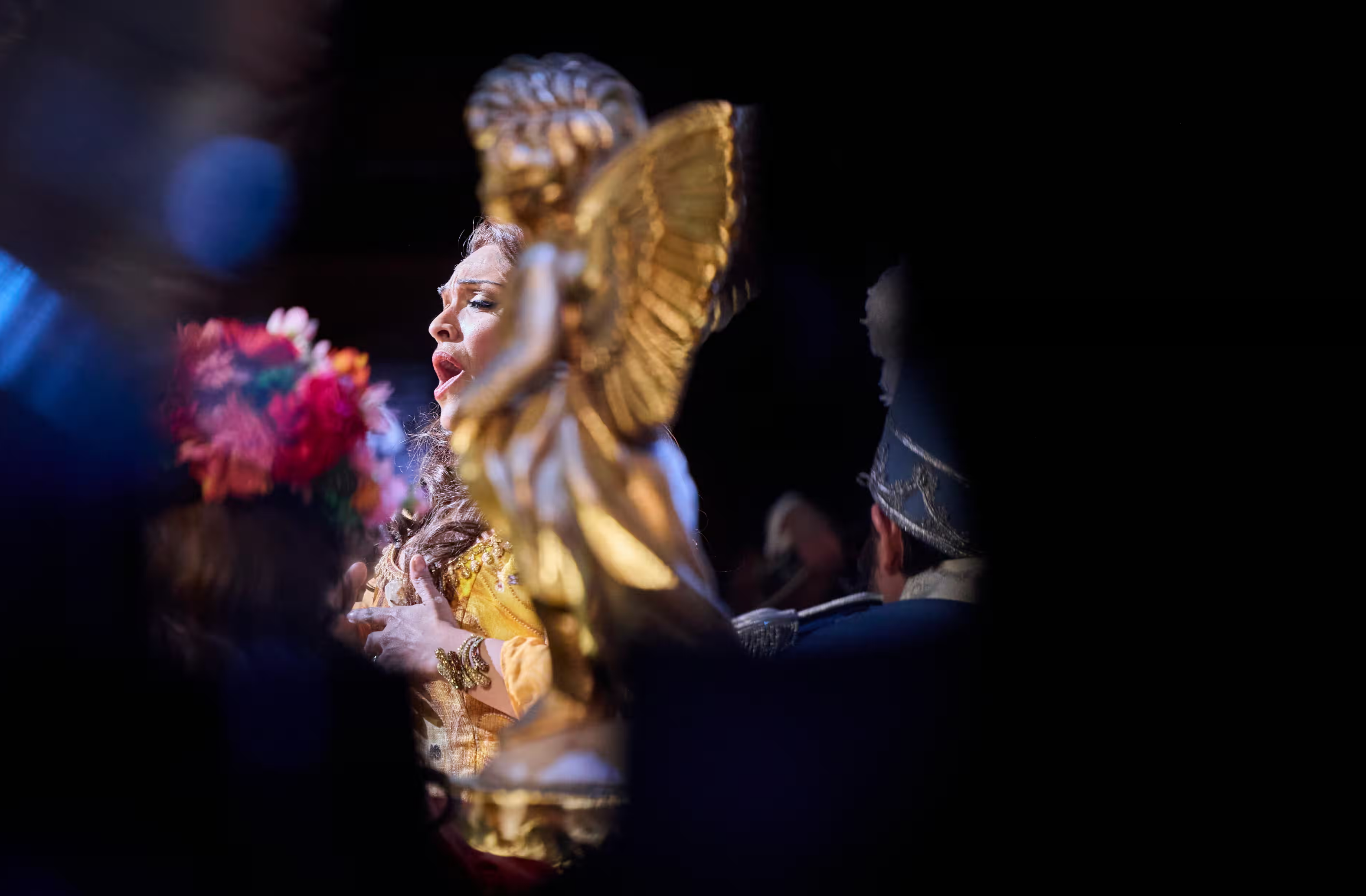
My role involves lots of choreography, lots of dancing, and I’ve been having to rehearse in a leg brace. I tore my ACL – a ligament in the knee joint – a few weeks ago. It was terrible luck, but it was a minor miracle that I tore the only ligament that I could have recovered from without surgery. I’ve done huge amounts of exercising and loads of ice treatments and the physios tell me I’ve made a miraculous recovery.
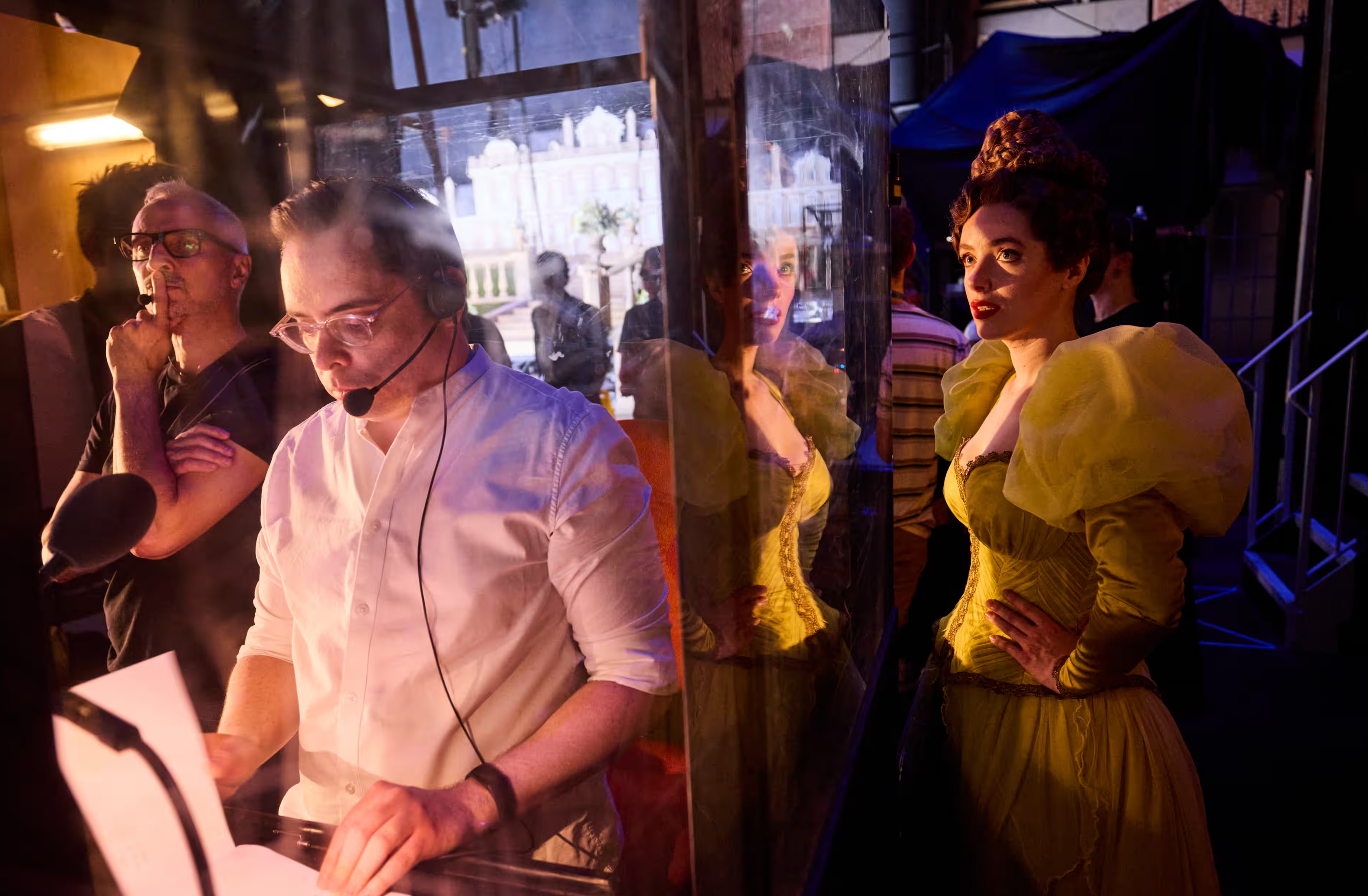
You get a lot of bang for your buck when you come into The Merry Widow. It’s like five pieces rolled into one. There’s opera, there’s straight-up drama, and then there’s dance and cabaret elements and music theatre in there too. Some people might come for the can-can and the waltzing and the frothiness and the sheer fun of it. But I think they will stay because you fall hook, line and sinker for the love story.
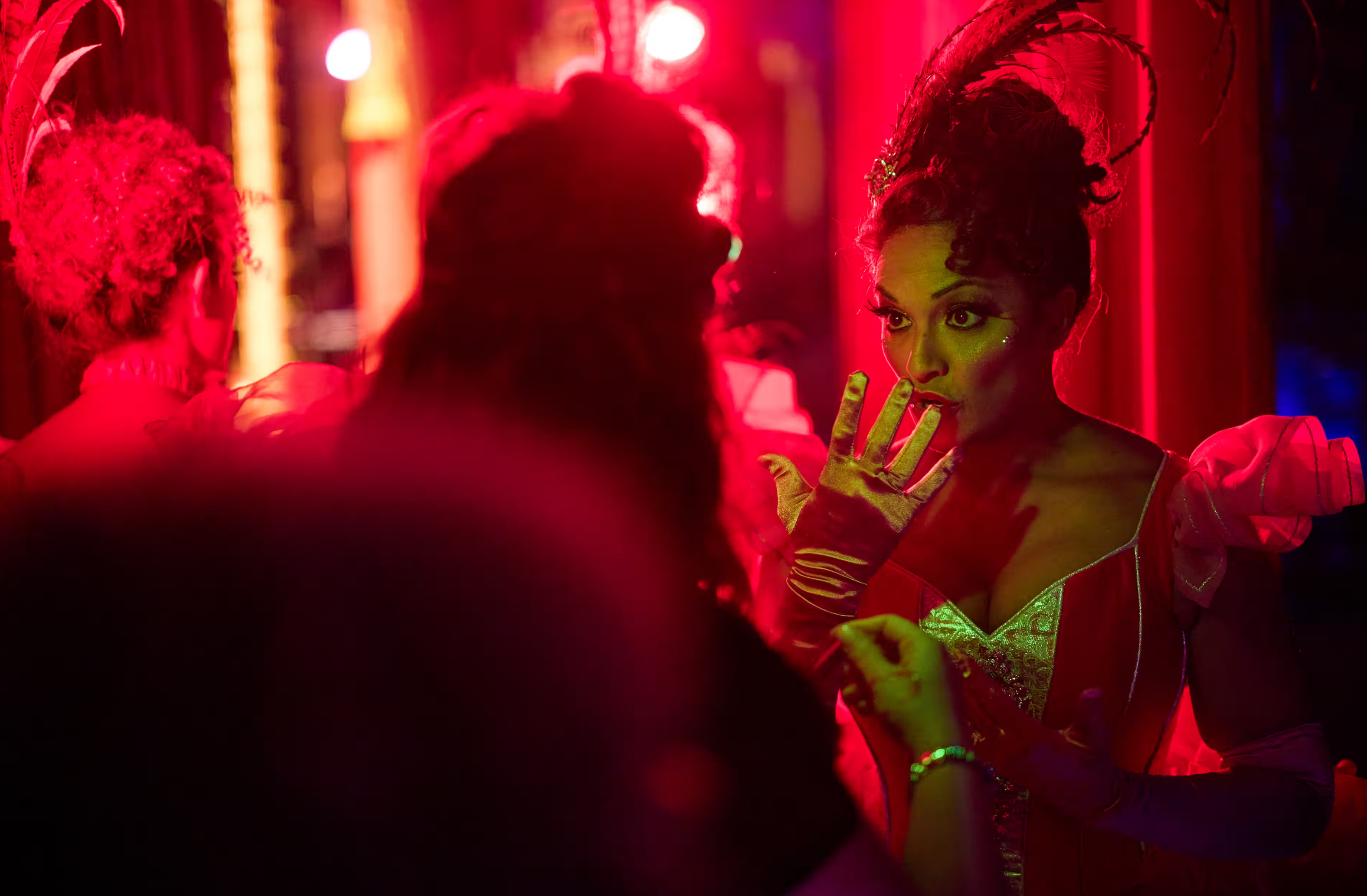
The Merry Widow is at Glyndebourne from 9 June to 28 July and will be recorded for broadcast on the BBC later in the year

Leave a Reply